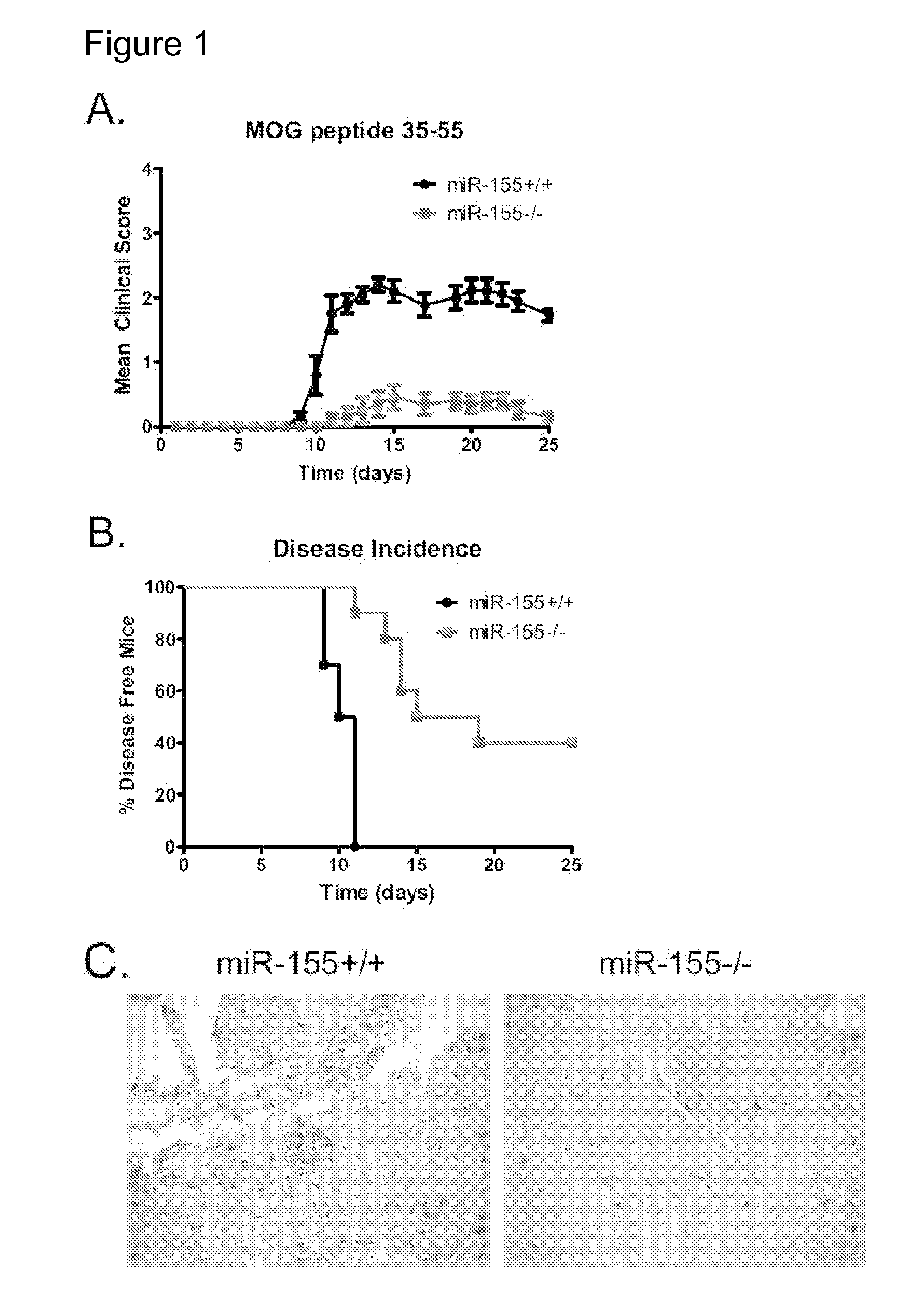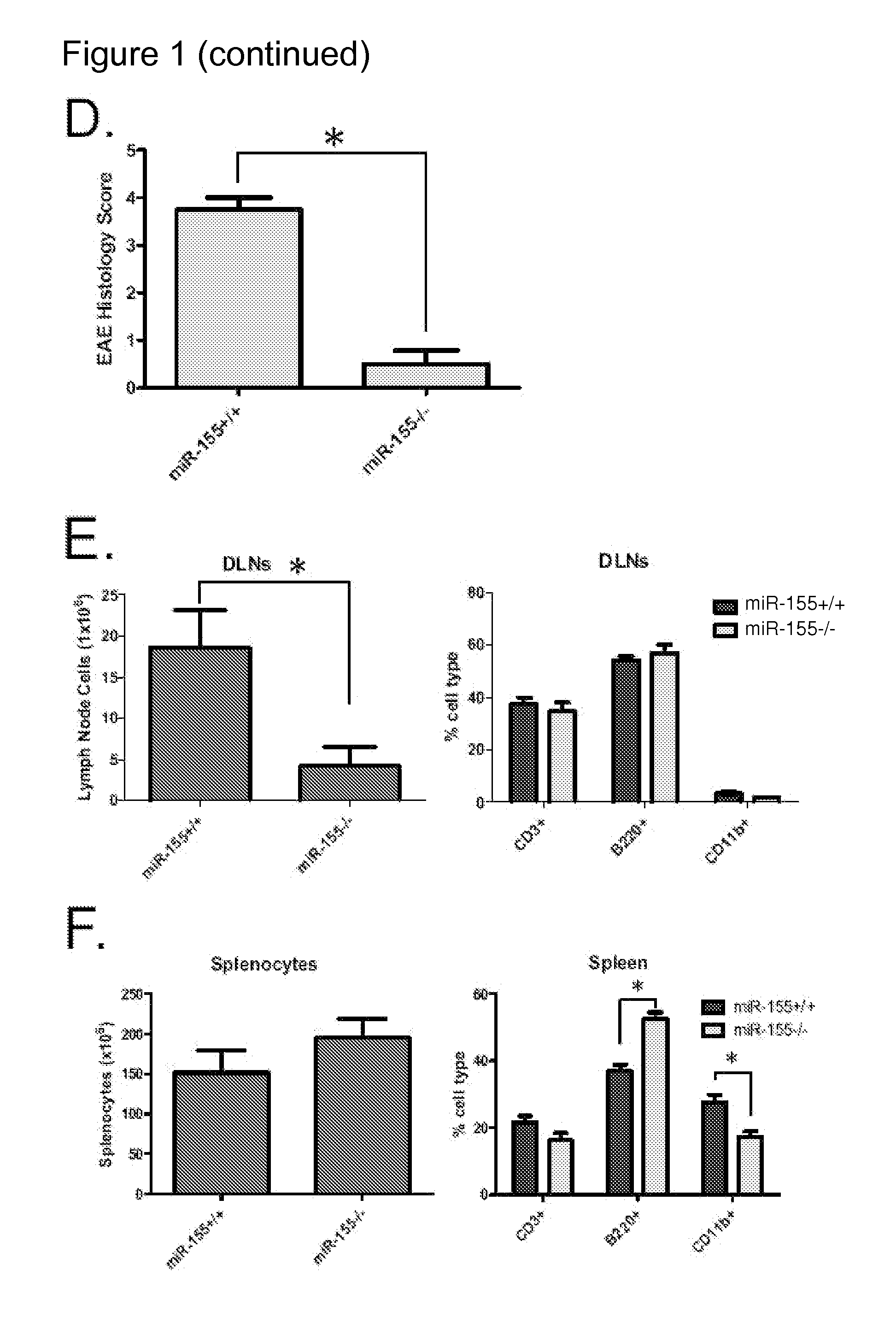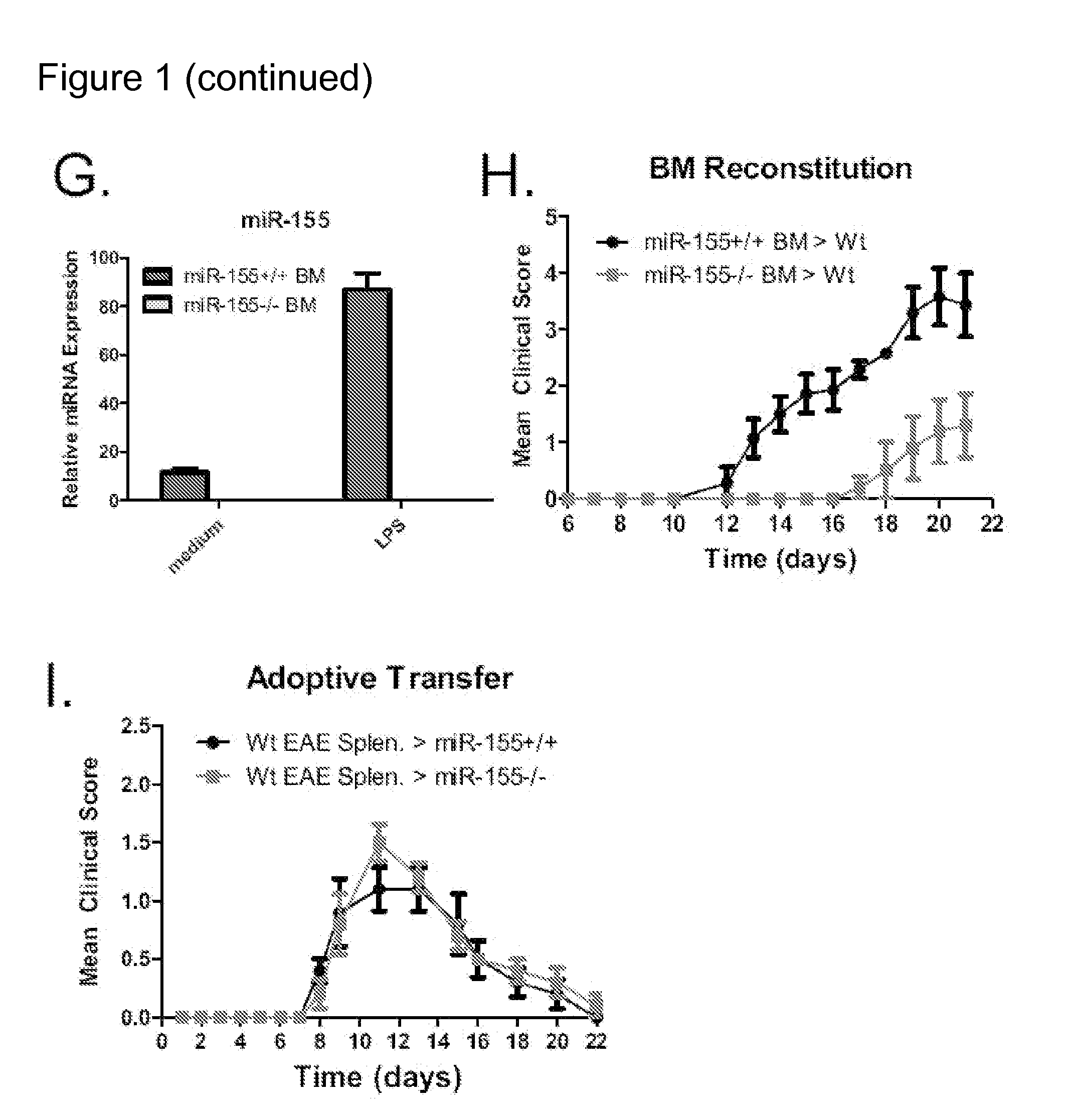Treatment of autoimmune inflammation using mir-155
a technology of mir-155 and autoimmune inflammation, which is applied in the field of activities of microrna155, can solve the problems of serious disease and debilitating outcome of important organ systems, and achieve the effects of decreasing cd4+ t cell proliferation, increasing immune response to an infectious agent, and decreasing cytokine production
- Summary
- Abstract
- Description
- Claims
- Application Information
AI Technical Summary
Benefits of technology
Problems solved by technology
Method used
Image
Examples
example 1
miR-155− / − Mice are Resistant to EAE Induced by MOG35-55
[0134]To identify a possible role for miR-155 in mediating tissue specific autoimmune inflammation, a mouse model of EAE was used. Both Wt and miR-155− / − mice were immunized with 100 μg of the myelin oligodendrocyte glycoprotein (MOG) peptide35-55 emulsified in complete Freund's adjuvant (CFA) followed by administration of pertussis toxin. As anticipated, Wt mice first displayed neurologic symptoms approximately 9 days post-immunization, with peak disease severity on day 14 (average clinical score of 2.1), and 100% disease incidence (FIGS. 1A and 1B). In contrast, miR-155 deficient mice exhibited a later onset of symptoms on day 11, with a low peak disease severity on day 15 (average clinical score of 0.3). Unlike the Wt controls, the disease incidence in miR-155− / − mice was only 60% (FIGS. 1A and 1B). On day 25, mice were sacrificed and underwent further evaluation including tissue histological analysis. H&E brain cross-secti...
example 2
miR-155− / − Mice Exhibit Defective Inflammatory T Cell Development During EAE
[0136]TH17 and TH1 cells are hematopoietic cells that develop during tissue specific inflammatory responses and play a pivotal role in enhancing inflammation (Littman and Rudensky, 2010). The DLNs and splenocytes from both Wt and miR-155− / − mice were examined for the presence of IL-17 (TH17) or IFNγ (TH1) producing CD4+ T cells during EAE. On day 25 post-immunization with MOG35-55, miR-155− / − mice had substantially diminished levels of TH17 cells in both their DLNs and spleens compared to Wt mice (FIGS. 2A and 2B). Moderately reduced levels of IFNγ producing TH1 CD4+ cells were also found in the spleens but not DLNs of MOG35-55 immunized mice in the absence of miR-155 (FIGS. 2A and 2B). The total numbers of these inflammatory T cell populations in the spleen and DLNs was also similarly reduced in miR-155− / − versus miR-155+ / + mice 25 days after immunization with MOG35-55 (FIG. 9).
[0137]The in vitro recall res...
example
Treatment of Inflammation
[0159]This example illustrates the treatment of a subject suffering from T cell mediated inflammation. A subject suffering from or at risk of developing T cell-mediated inflammation is identified. The subject is administered an effective amount of an miR-155 antagonist, such as an miR-155 antisense compound. A typical daily dose for an miR-155 antagonist might range from about 0.01 μg / kg to about 1 mg / kg of patient body weight or more per day and can be readily determined by the skilled artisan based on a number of factors, including but not limited to the nature of the miR-155 antagonist, the route of administration, and the subject's state. Efficacy is evaluated by observing a reduction of inflammation, or a delay or slowing of an increase in the inflammation. In some embodiments, a reduction in proliferation of CD4+ T cells may be measured.
PUM
| Property | Measurement | Unit |
|---|---|---|
| Immunogenicity | aaaaa | aaaaa |
Abstract
Description
Claims
Application Information
 Login to View More
Login to View More - R&D
- Intellectual Property
- Life Sciences
- Materials
- Tech Scout
- Unparalleled Data Quality
- Higher Quality Content
- 60% Fewer Hallucinations
Browse by: Latest US Patents, China's latest patents, Technical Efficacy Thesaurus, Application Domain, Technology Topic, Popular Technical Reports.
© 2025 PatSnap. All rights reserved.Legal|Privacy policy|Modern Slavery Act Transparency Statement|Sitemap|About US| Contact US: help@patsnap.com



